Former Kano School (1)
I visited the former Kano School in Tomi City, Nagano Prefecture.
I knew visiting on a holiday meant I could only see the exterior, but I came knowing that. To tour the building inside, we need to contact Kano Elementary School or the Tomi City Board of Education on a weekday to have it opened.
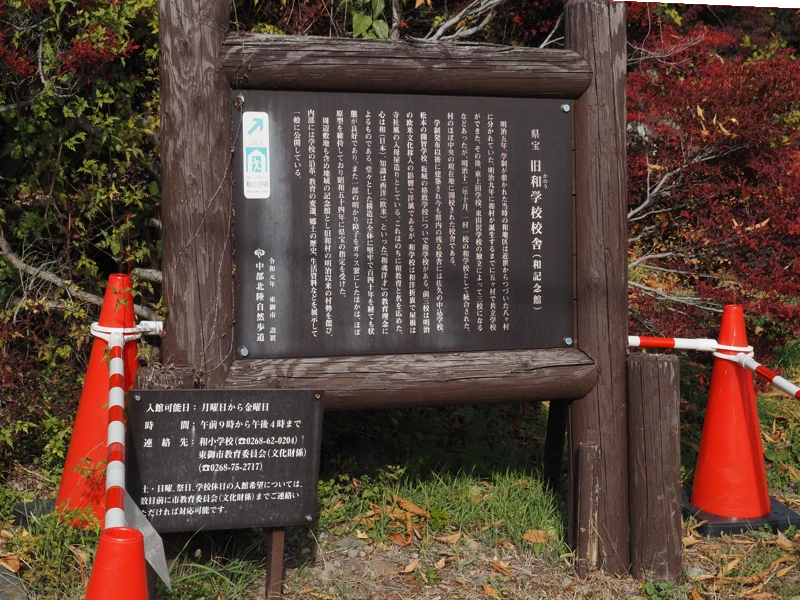
An information board stands in a spot visible from the road.
The village of Kano, which gave the school its name, was formed in 1876 through the merger of seven neighboring villages.
In this region, the year after the Education System was promulgated in 1872, five villages (Kuribayashi, Higashi-Ueda, Kami-Fukai, Miwake, and Higashi-Tazawa) established a jointly-run school at Fugenji Temple in Kuribayashi Village. Due to commuting distances, Higashi-Ueda School and Higashi-Tazawa School (which also included Miwake Village in its district) each established independent schools in 1874.
After the seven villages merged to form Kano Village in 1876, a movement arose advocating for expanding the school district and merging the three schools. In 1878, a petition for elementary school consolidation was submitted to the prefecture.
This school building was completed in 1879. Local master carpenter Hori Hisakichi oversaw its design and construction, though the building plaque lists the names of five master carpenters.
A short climb up the slope from the road leads to the school gate, but the trees block the view of the school building from here.
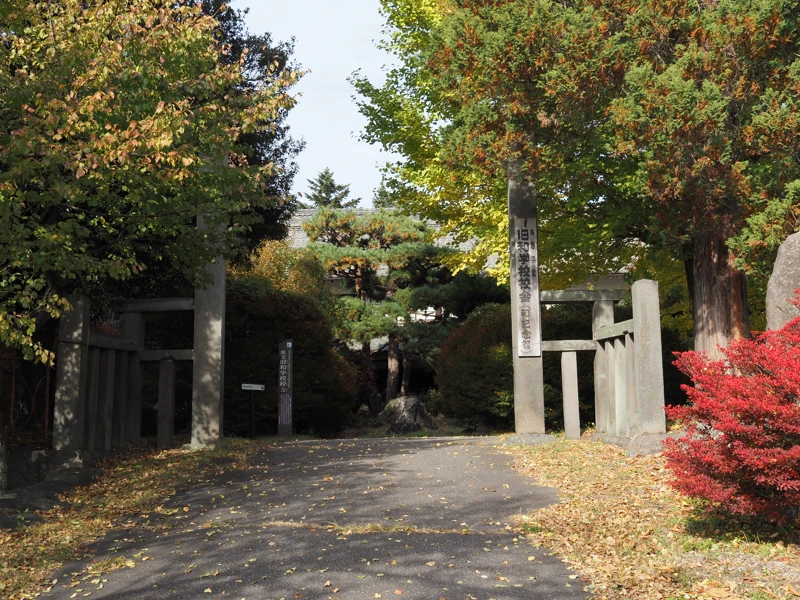
Continuing straight ahead, we encounter an artificial mound in front of the school building, making it impossible to photograph the building’s front.
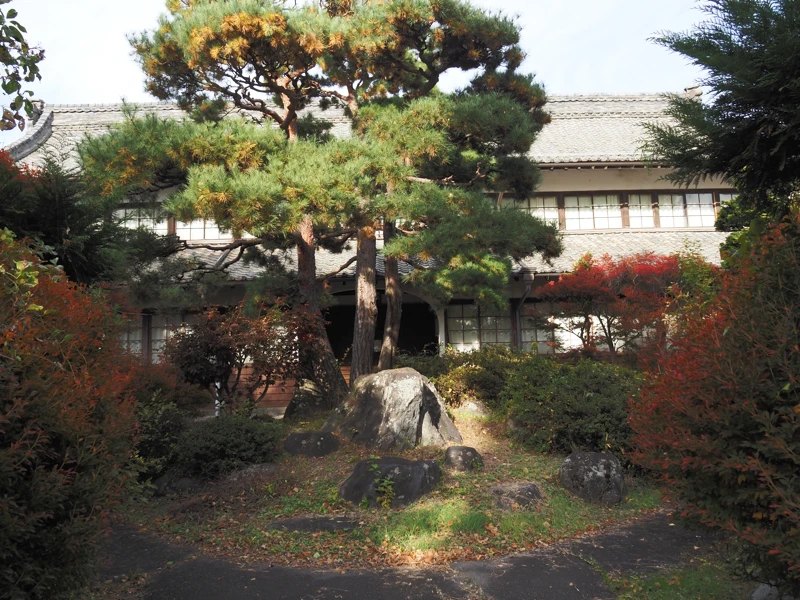
Taking the path beside the artificial hill brings us out in front of the building.
Features like the second floor being smaller than the first, the absence of a carriage porch at the entrance, the arched decoration above it, and the recessed entrance resemble the former Kakuchi School in Sakaki Town. Since the Kakuchi School was completed in 1878, it was likely used as a reference.
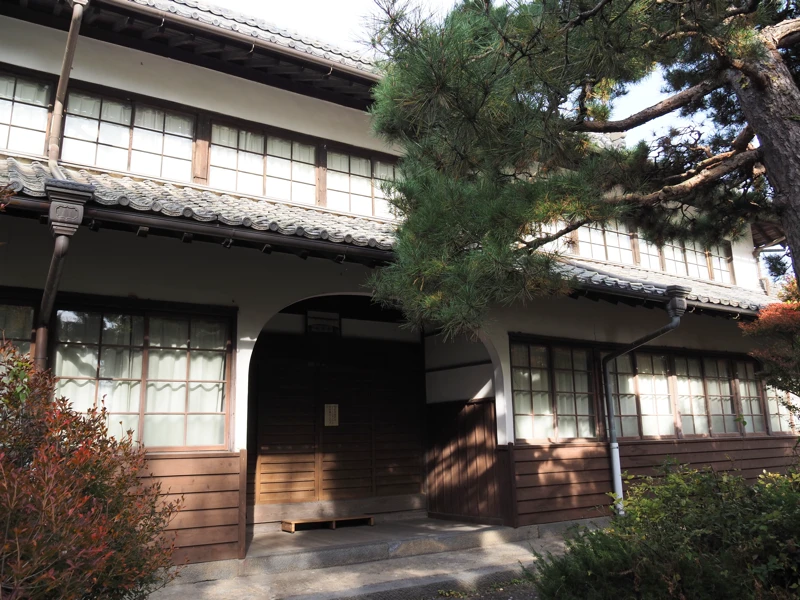
While the windows are now glass, at the time of completion they were tall, vertical windows with shutters on white walls. This feature also matches the Kakuchi School. (A photograph is published in the “Kano Elementary School Centennial History.”)
However, the roofs give different impressions. The Kano School gives a more distinctly Japanese impression and conveys a sense of solidity.
This is the school building viewed from the side. (The front is on the right.)

(Reference: Former Kakuchi School)

Looking at the original design plans for the Kano School, the roof was initially intended to have a standard pitch. However, the master carpenter reportedly insisted, “Since this is a place for learning, it should be built like the shrine of Tenjin,” leading to this unique roof design. The cost of this specialized carpentry work was apparently covered by the master carpenter’s own donation.
The school building’s construction costs were covered by donations (including those allocated per household) and donated materials.
Although I didn’t tour the interior this time, a floor plan for the exhibition room is posted on the west entrance wall, so the general layout is clear. The first floor had a central corridor with faculty rooms and classrooms arranged north and south of it.
The second floor lacks a corridor, so I imagine it was designed as a large hall, like an auditorium.
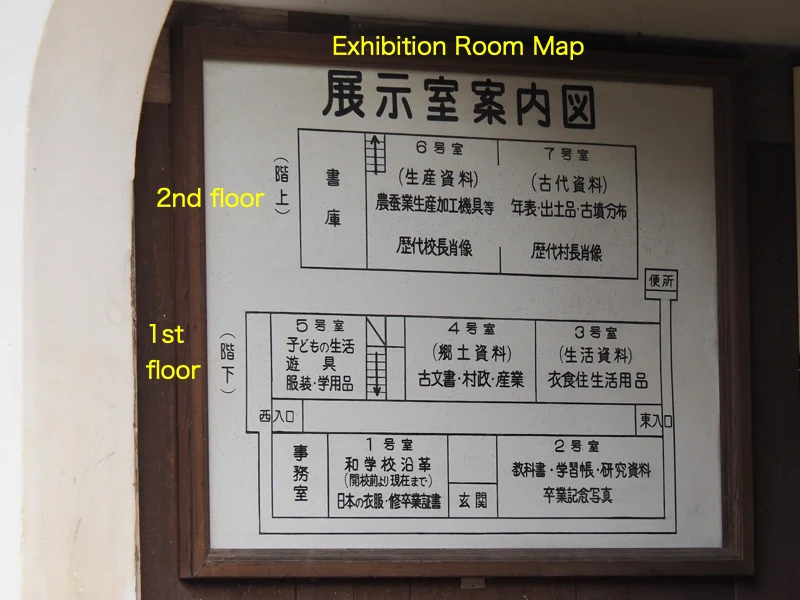
School building photographed from the northwest side.
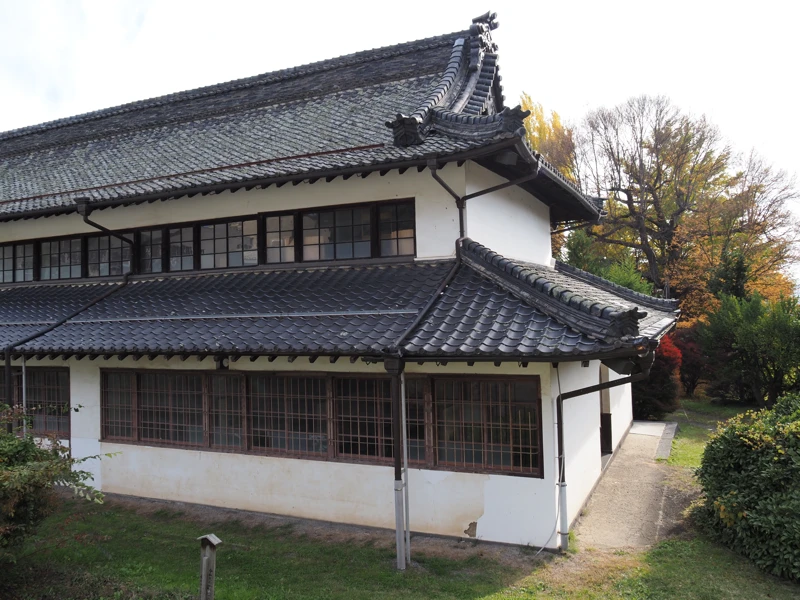
The Elementary School Ordinance was promulgated in 1886, and the following year, Kano School was renamed Kano Elementary School.
Two years later, the establishment of higher elementary schools began within Nagano Prefecture, starting at Kano Elementary School with the creation of the Kano Branch of the Chiisagata Higher Elementary School. The Chiisagata Higher Elementary School was established by a union formed by villages within the district.
As the number of students increased with the launch of the advanced elementary school branch, the east building (3 classrooms) was added in 1889, followed by the west building (2 classrooms) the next year.
However, it was decided that advanced elementary schools were better managed by individual villages, so the Chiisagata Advanced Elementary School Association dissolved in 1895. Kano Elementary School was renamed Kanou Senior Elementary School.
In 1898, the wooded area south of the road was cleared to create a playground.
In 1901, the government mandated the thorough implementation of four years of compulsory education. The following year, Kano School expanded with the addition of the North Building (four special classrooms) and a gymnasium.
Furthermore, in 1908, compulsory education was extended to six years, becoming six years of elementary course and two years of higher course. That year, the East Building was demolished, and the Central Building (four classrooms) and South Building (six classrooms) were added.
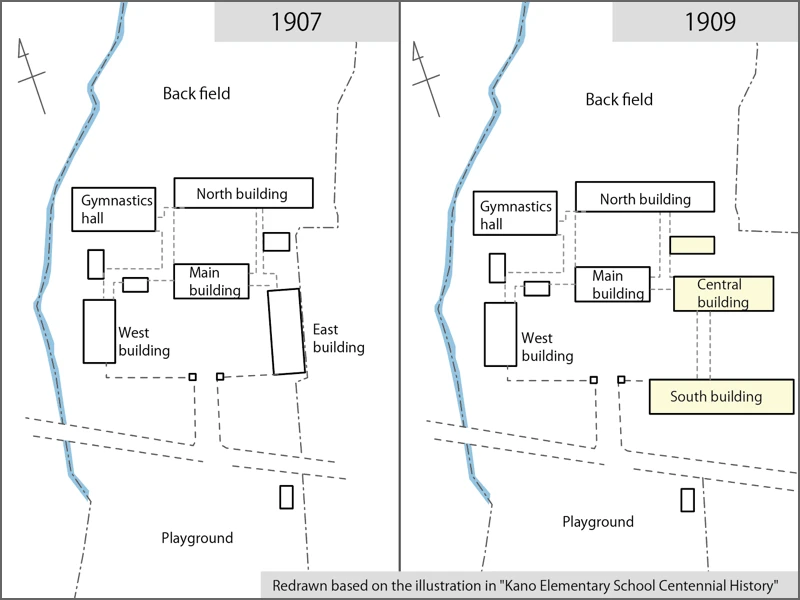
Interestingly, discussions about demolishing the main building surfaced around this time. When faced with the need for expansion, some argued that demolishing the main building and using its materials to construct new school buildings would allow for a facility three times larger…
Ultimately, however, the main building was spared demolition.
The north-facing windows of the school building. They are fitted with iron bars.

To the north and east of the former Kano school grounds lies the site of current Kano Elementary School. Directly north is the swimming pool.
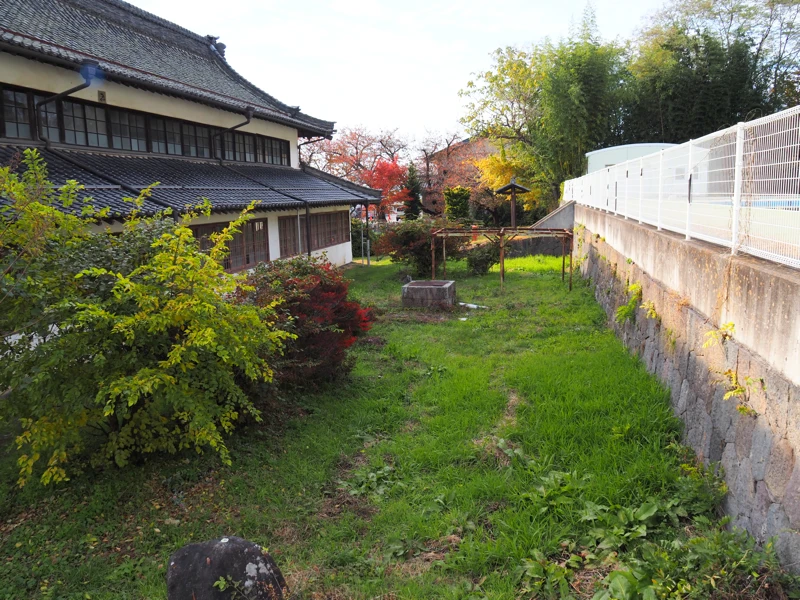
The late Meiji period also saw the birth of various organizations for alumni cultivation and fellowship: the Alumni Association (founded 1889), the Evening Study Society (founded 1899), the Young Men’s Association (founded 1903, formed by merging the Alumni Association and others), and the Women’s Association (founded 1905). These diverse groups often used the school as their base of operations.
From 1910, the third grade of the sinior elementary new program was established at the village expense within the Sinior Elementary School. In Nagano Prefecture, only four schools offered this: the Nagano Prefectural Normal School Affiliated Elementary School, and the schools in Kano, Komoro, and Akaho. Since the curriculum was equivalent to the Normal School entrance exam, it also attracted students aspiring to enter the Normal School. This new three-year higher elementary system was abolished in 1922.
The Taisho era and beyond will be covered in the next article.
(To be continued)
[References]
"Kano Village History: Modern Edition" (Kano Village History Editorial Committee / Tobu Town Community Center Kano Branch / 1963)
"Kano Elementary School Centennial History" (Kano Elementary School Centennial Commemorative Project Executive Committee, Commemorative Publication Section / Tobu Town Kano Elementary School / 1979)
"Nagano Prefectural History: Art and Architecture Materials Volume 2 (Architecture) Commentary" (Nagano Prefecture / Nagano Prefectural History Publication Committee / 1990)

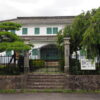
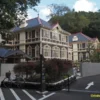


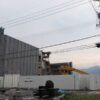
Discussion
New Comments
No comments yet. Be the first one!